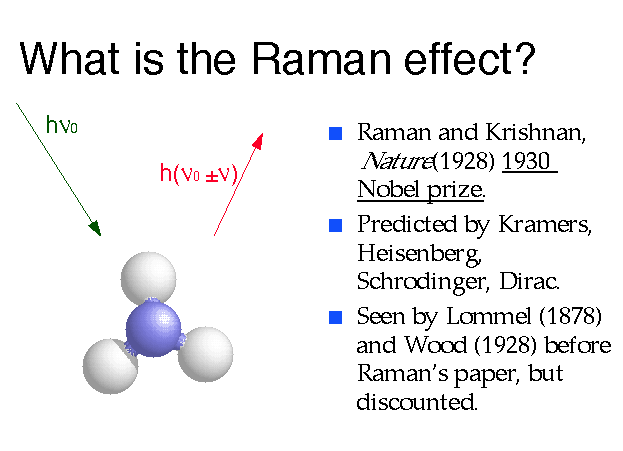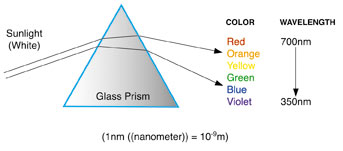In a landmark lecture on March 16, 1928, Professor C.V. Raman introduced the world to a groundbreaking discovery—a new type of radiation emitted by atoms and molecules. The Raman Effect, a fundamental scattering phenomenon, was discovered on February 28, 1928. This phenomenon, now known as the Raman Effect, emerged from a simple yet profound experiment that revolutionised physics and chemistry. Conducted far from Western research hubs, this discovery garnered global recognition and earned Raman the Nobel Prize in Physics (1930).
C.V. Raman: A Biography
| Full Name | Chandrasekhara Venkata Raman |
| Born | November 7, 1888 (Tamil Nadu, India) |
| Education | University of Madras (M.A. in Physics) |
| Major Contribution | Discovery of the Raman Effect (1928) |
| Nobel Prize | Physics (1930): First Indian to receive a Nobel in Science |
- Indian Institute of Science (IISc)
- Raman Research Institute (Founded by Raman) |
- Death: November 21, 1970
What is the Raman Effect?
The Raman Effect is a fundamental scattering phenomenon that occurs when a transparent medium is illuminated by monochromatic light, causing the scattered radiation to contain spectral lines at frequencies different from the incident light. The frequency difference corresponds to the characteristic infrared absorption frequency of the molecule, providing direct experimental proof of the induced emission of radiation by molecules.
The discovery of the Raman Effect originated from the study of the blue colour of the Mediterranean Sea.
So let us understand in detail.
When light interacts with a molecule, the oscillating electromagnetic field of the photon distorts the molecular electron cloud, inducing polarisation. This process temporarily elevates the molecule to a higher energy state as the photon transfers its energy.
This temporary state, often called the virtual state, represents a fleeting interaction between the photon and the molecule. Since this state is unstable, the photon is almost instantly re-emitted as scattered light.
In most cases, the scattered photon retains the same wavelength as the incident photon, indicating that the molecule’s energy remains unchanged. This phenomenon, known as Rayleigh scattering, is an example of elastic scattering, where the energy of the scattering particle is conserved.
However, in 1928, Sir C.V. Raman and his student K.S. Krishnan discovered an inelastic form of scattering. In this case, photons exchange energy with the molecules, leading to a shift in their wavelength. This phenomenon, now known as the Raman Effect, results in two possible outcomes:
- Stokes Scattering: The molecule absorbs energy, causing the scattered photon to shift to a longer wavelength (redshift).
- Anti-Stokes Scattering: The molecule releases energy, leading to a shift to a shorter wavelength (blueshift).
This discovery provided a significant breakthrough in molecular spectroscopy, enabling the study of vibrational and rotational energy transitions in different materials.

Source: researchgate
C.V. Raman’s Fascination with Light Scattering
C.V. Raman, educated entirely in India, gained recognition for his research in optics and acoustics. By the time he visited London in 1921, his work was already acknowledged by renowned physicists like J.J. Thomson and Lord Rutherford.

Source: acs.org
What were the reasons behind the discovery of the Raman's Effect?
C.V. Raman’s Fascination with Light Scattering, i.e., it was during his return voyage from London to Bombay aboard the SS Narkunda that his scientific journey took a transformative turn.
The discovery of the Raman Effect originated from the study of the blue colour of the Mediterranean Sea. In 1921, while crossing the Mediterranean, he became intrigued by the deep blue colour of the sea. Dissatisfied with the prevailing explanation that it was merely a reflection of the sky, he began formulating his hypothesis. Even before reaching Bombay, he penned a letter to the journal Nature detailing his thoughts on the matter.
Shortly thereafter, Raman provided conclusive evidence that the ocean’s colour resulted from the scattering of sunlight by water molecules—ironically, the same principle that explained why the sky appeared blue. This discovery fuelled his fascination with light scattering, leading his research team in Calcutta to conduct extensive experiments, primarily with liquids but also with solids. His findings further clarified the blue hue observed in Alpine glacier ice. All these observations made him experiments that led him to conclude that the colour was due to the scattering of light by the molecules of seawater. This observation sparked a series of experiments that ultimately led to the discovery of the Raman Effect.
Unveiling the Raman Effect
- Analysing scattered light, especially from liquids, was a challenging task. Early experiments in Calcutta relied on visual observations rather than precise wavelength measurements. In his groundbreaking study, Raman and his collaborator K.S. Krishnan filtered violet light through a liquid sample. Most of the scattered light retained its original violet hue, a phenomenon known as Rayleigh scattering. However, they noticed that a small fraction of the scattered light had shifted to a different colour, which they isolated using a green filter.
- Raman documented these findings in Nature, reporting that over 60 different liquids exhibited this colour shift. He described the phenomenon as universal.
- This effect, later termed the Raman Effect, demonstrated that when light interacts with molecules, a small portion changes wavelength. Given that only one in a million scattered photons exhibited this shift, the effect had remained undiscovered until Raman’s meticulous experiments.
- In the early stages, sunlight served as the primary light source, but it lacked the necessary intensity. In 1927, the Indian Association for the Cultivation of Science (IACS) acquired a refracting telescope, enabling Raman to focus sunlight more effectively.
- By 1928, with the advent of mercury arc lamps, he switched to an even more powerful light source, allowing for more precise investigations. Realising that qualitative observations alone would not suffice, Raman replaced visual inspections with a spectroscope to measure the exact wavelengths of scattered light.
- Later, he adopted a quartz spectrograph, enabling him to capture and analyse the spectral shifts more accurately. His breakthrough findings were formally published in the Indian Journal of Physics on March 31, 1928, cementing his legacy in the field of optical physics.
What were the steps followed by C.V. Raman during the experiments?
Steps Followed by him:
| Step | Method |
| 1 | Isolated violet light from sunlight using a filter. |
| 2 | Passed the light through a liquid sample. |
| 3 | Observed scattered light, which was mostly violet. |
| 4 | Detected a faint green component, proving a change in wavelength. |
| 5 | Measured exact wavelengths using a spectroscope. |
Significance of the Discovery
The discovery of the Raman Effect was a significant milestone in the field of spectroscopy. It provided a new tool for studying molecular vibrations and rotations, and it has since been used in a wide range of applications, including materials science, chemistry, and biology. The Raman Effect has also led to the development of new techniques such as Raman microscopy and surface-enhanced Raman spectroscopy. Raman’s experiments led to many more significant results, as listed below:
- The Raman Effect was universal—observed in over 60 liquids.
- The shift in wavelength confirmed interactions between light and molecules.
- The discovery provided strong evidence for quantum theory.
- It remained undetected earlier due to its weak intensity (1 in a million photons change wavelength).
The Legacy of the Discovery
The discovery of the Raman Effect has had a profound impact on science and technology. It has led to the development of new techniques for studying materials and has found applications in a wide range of fields. The Raman Effect is a testament to the power of scientific curiosity and the importance of basic research.
The Raman Effect on Physics
The scientific community quickly acknowledged the significance of Raman’s discovery.
Scientific Impact:
- Professor R.W. Wood of Johns Hopkins verified and praised Raman’s discovery.
- The Raman Effect provided strong evidence for quantum theory.
- The discovery contributed to understanding atomic and molecular structures.
- More than 700 research papers on the Raman Effect were published within the first seven years.
The Raman Effect on Chemistry
By the late 1930s, chemists adopted the Raman Effect as a powerful analytical tool.
Applications in Chemistry:
- Material Identification: Each substance has a unique Raman spectrum, like a fingerprint.
- Quantitative Analysis: The intensity of Raman spectral lines correlates with concentration.
- Versatility: It applies to solids, liquids, gases, and even aqueous solutions.
- Limitations: Infrared spectroscopy, developed post-World War II, temporarily overshadowed Raman spectroscopy.
Raman Spectroscopy
Raman spectroscopy is a powerful analytical technique that utilises scattered light to examine the vibrational energy levels of molecules. This method is widely used to determine the chemical composition and structural characteristics of various substances.
One of the key advantages of Raman spectroscopy is its ability to provide a unique spectral "fingerprint" for material identification. The technique works by detecting Raman scattering, a phenomenon that occurs when light interacts with molecular vibrations, resulting in energy shifts that reveal essential information about the sample.
This method is suitable for analysing both organic and inorganic compounds in a non-destructive manner.
Types of Raman Spectroscopy:
- Resonance Raman Spectroscopy (RRS): Enhances specific vibrational modes by tuning the excitation wavelength to an electronic transition of the molecule.
- Surface-Enhanced Raman Spectroscopy (SERS): Increases signal intensity through interactions with nanostructured metallic surfaces.
- Micro-Raman Spectroscopy – Enables high-resolution analysis of microscopic samples with precise spatial mapping.
- Non-linear Raman Spectroscopic Techniques: Utilise advanced optical processes for improved sensitivity and selectivity in complex samples.
This technique is widely used in fields such as material science, pharmaceuticals, forensics, and environmental analysis due to its accuracy and versatility.
With the advent of lasers in the 1960s, Raman spectroscopy experienced a resurgence.
Modern Applications:
- Pharmaceutical Industry: Quality control and process monitoring.
- Forensic Science: Analysing drugs without opening evidence bags.
- Nuclear Waste Analysis: Using fibre-optic probes for remote sensing.
- Medical Research: Detecting biochemical changes linked to diseases like cancer.
Advancements in Raman Spectroscopy
| Era | Advancement |
| 1928 | Initial discovery using sunlight and mercury arc lamps. |
| 1960s | Introduction of laser-based Raman spectroscopy. |
| 1980s | Development of Fourier Transform (FT) Raman spectroscopy. |
| Present | Applications in medicine, security, and nanotechnology. |
Conclusion
The discovery of the Raman Effect was a landmark achievement in the field of spectroscopy. It has had a profound impact on science and technology, and it continues to be a valuable tool for studying materials and biological samples. The Raman Effect is a testament to the power of scientific curiosity and the importance of basic research.
Comments
All Comments (0)
Join the conversation